The pandemic proved that it is possible to work outside the office. But is it the best option? And should it be the only option?
Like most companies, HOK implemented a remote work policy during COVID-19. While we could still deliver projects, we also realized that remote work deprived us of many of the things we value about what we do. This is especially true when it comes to the in-person collaboration and knowledge-sharing that are vital for innovation, creativity and inclusion.
If anything, the pandemic strengthened our belief in the office. As we’ve adopted post-pandemic hybrid policies, we’ve also witnessed the power of the office to unite people, spark innovation and support corporate culture and mentorship.
Since the pandemic, we have opened new HOK studios in Austin, Denver, Miami, Los Angeles and Boston, and embarked on major renovations of our Kansas City and New York offices. These spaces demonstrate how we are “walking the talk” when it comes to investing in the post-pandemic office and how workplace design is evolving for the hybrid era.
This article explores six major design trends we’ve incorporated into our new offices.
1. Focus on Hospitality
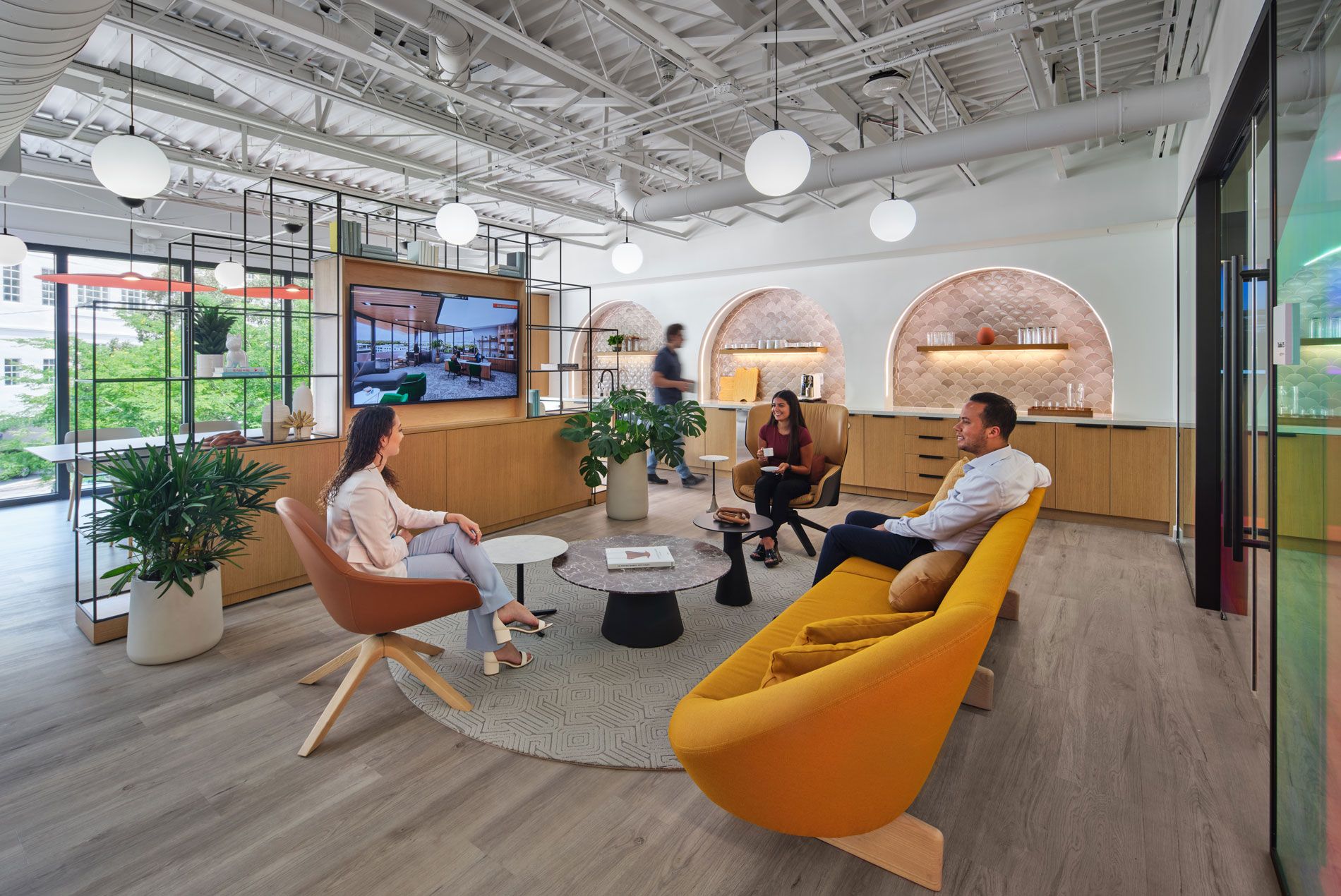
Today’s companies aren’t just competing against rival firms and their workplace offerings. They’re competing with coworking spaces and employees’ home offices. But what if we could make the office feel more welcoming, comfortable and accommodating—more like home?
That’s been a key goal for HOK. We’ve infused hospitality and residential elements to make our offices more desirable to visit and foster shared experiences, community and belonging—things we missed during the remote workdays of the pandemic.
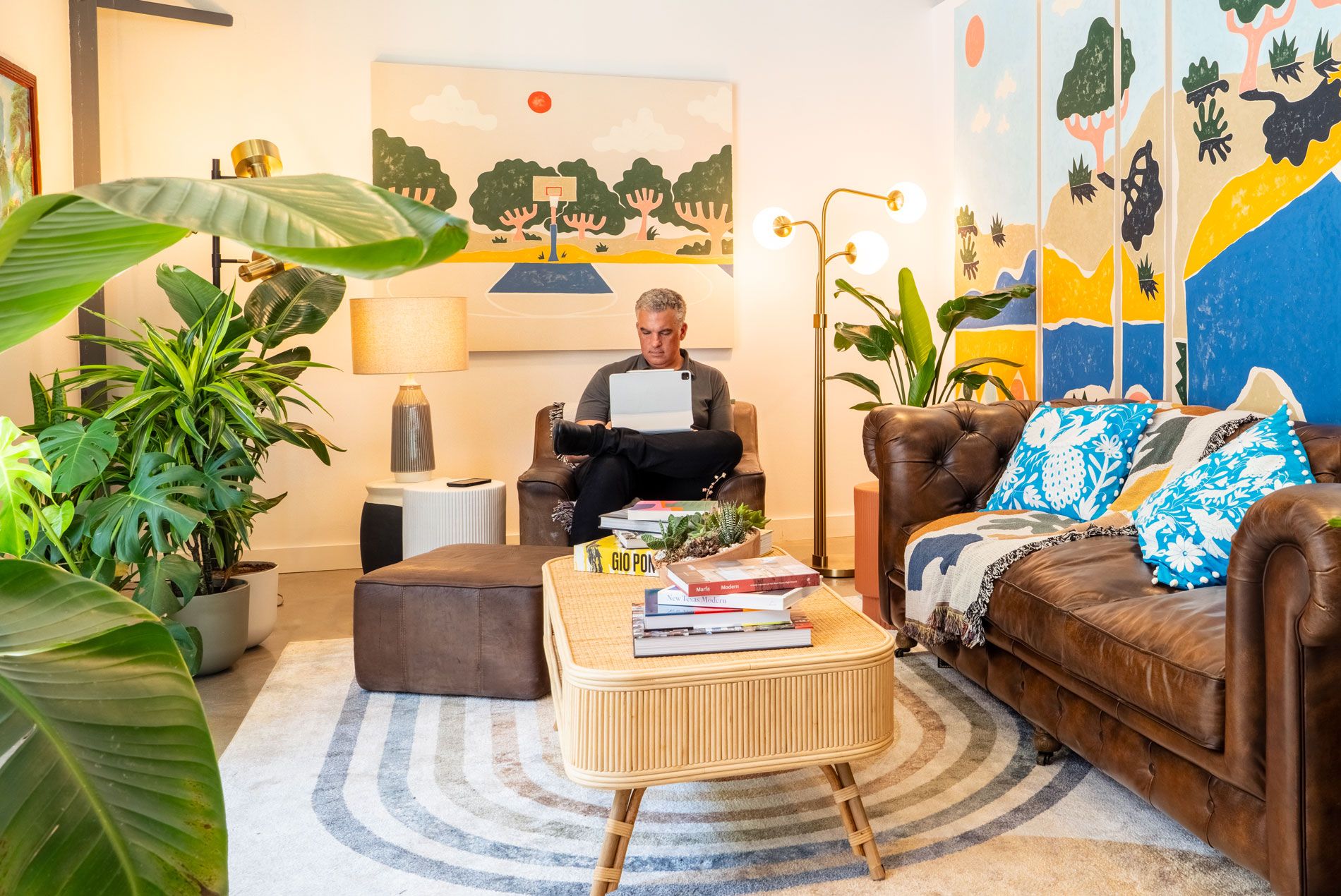
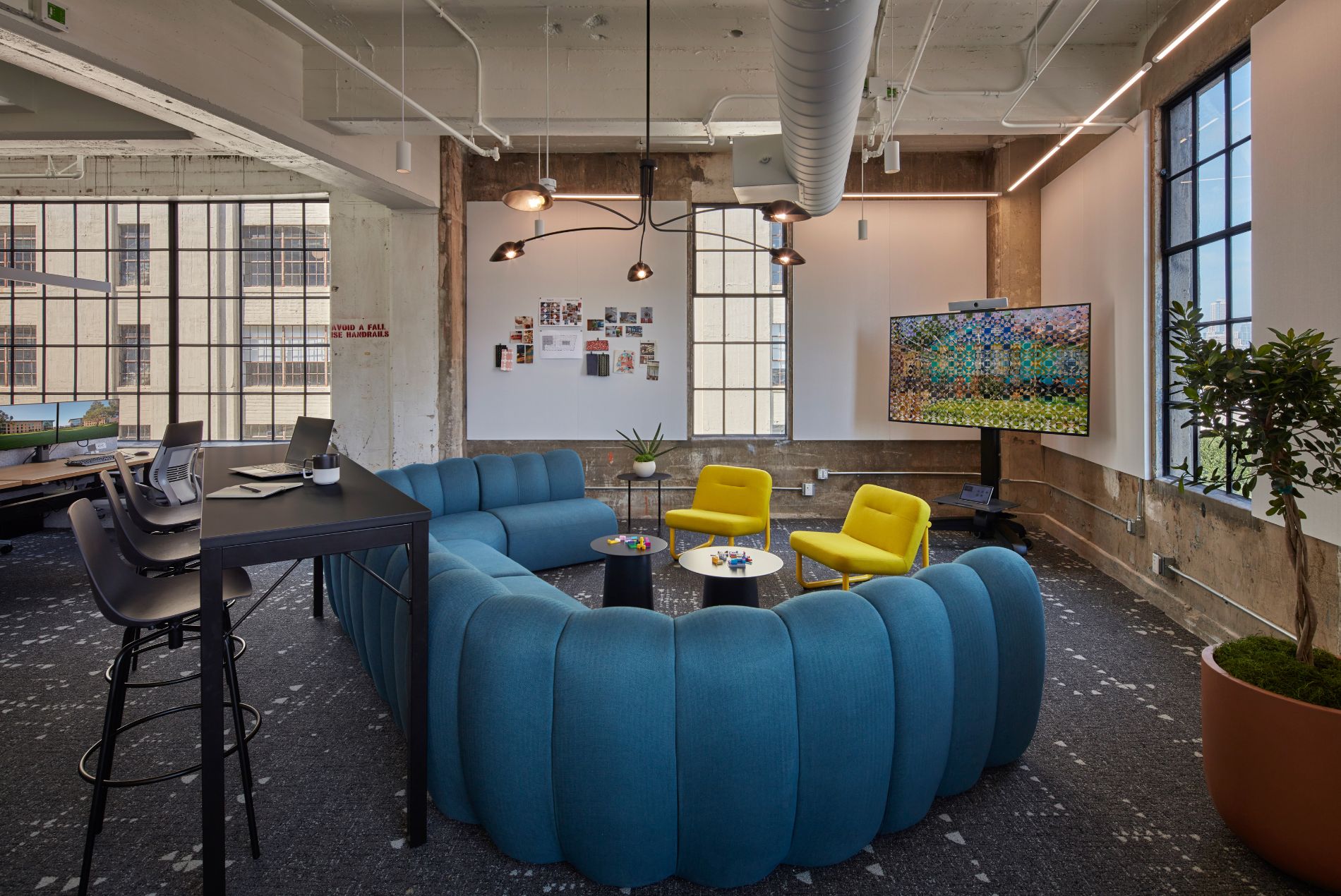
Drawing from hospitality and residential design, our new spaces feature soft furnishings, artwork, personality and work-setting choices to make the office warm and inviting. This strategy is paying off, as our new lounge areas and casual collaboration spaces have become some of the most popular spots within the office.
2. Hybrid-Work Flexibility
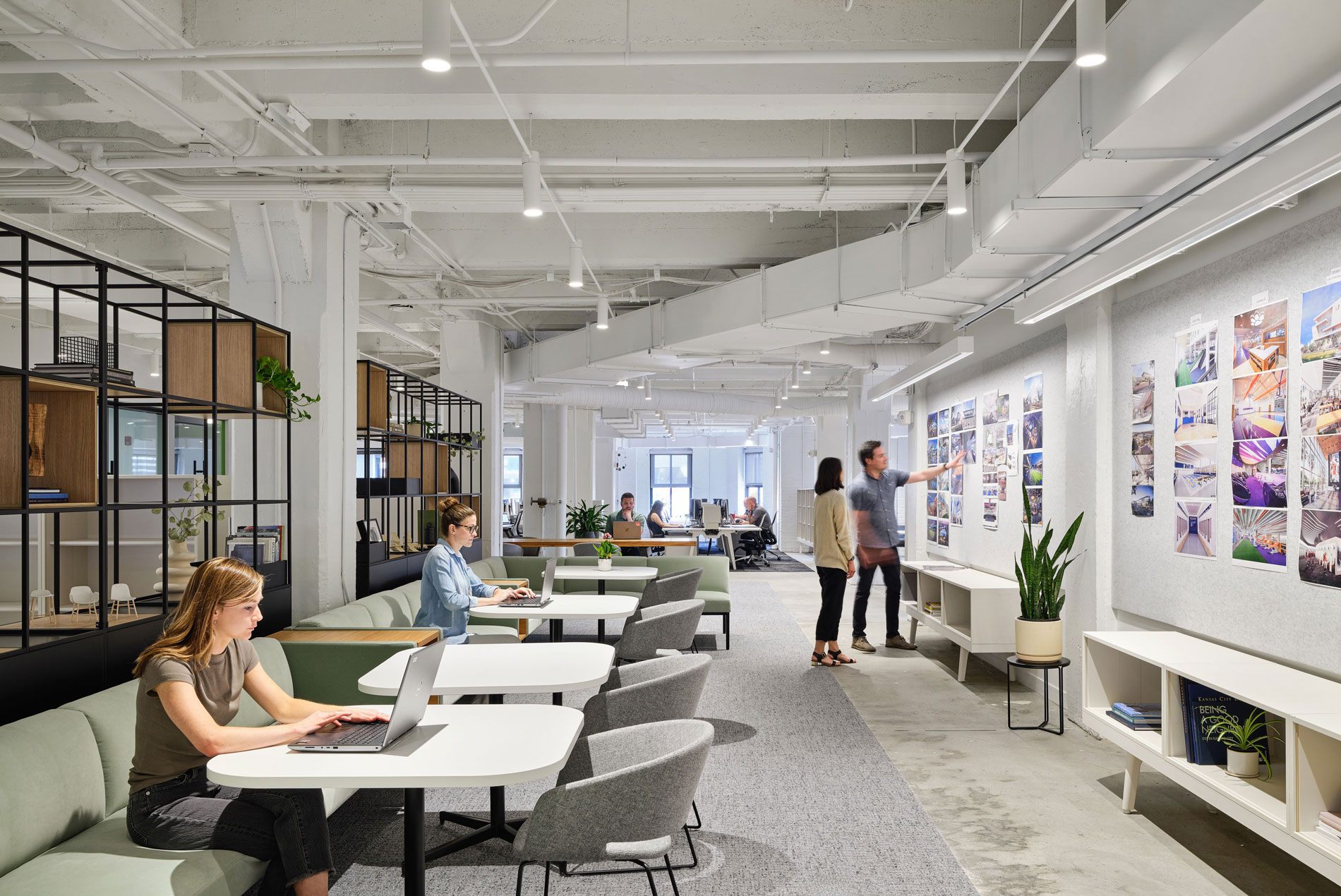
It’s not enough to provide comfortable and appealing workspaces. To truly support hybrid work, companies must offer a variety of work modalities and settings.
At HOK, a major draw for people returning to the office is the opportunity to brainstorm in-person with colleagues. But we’re also taking calls with clients, participating in mentoring sessions and working on heads-down tasks. These activities require fit-for-purpose spaces that support a variety of uses and enable hybrid interaction.
To accommodate these various work and gathering styles, we’ve upgraded technology throughout the office with ubiquitous Wi-Fi, seamless meeting connections and smart spaces for an intuitive user experience.
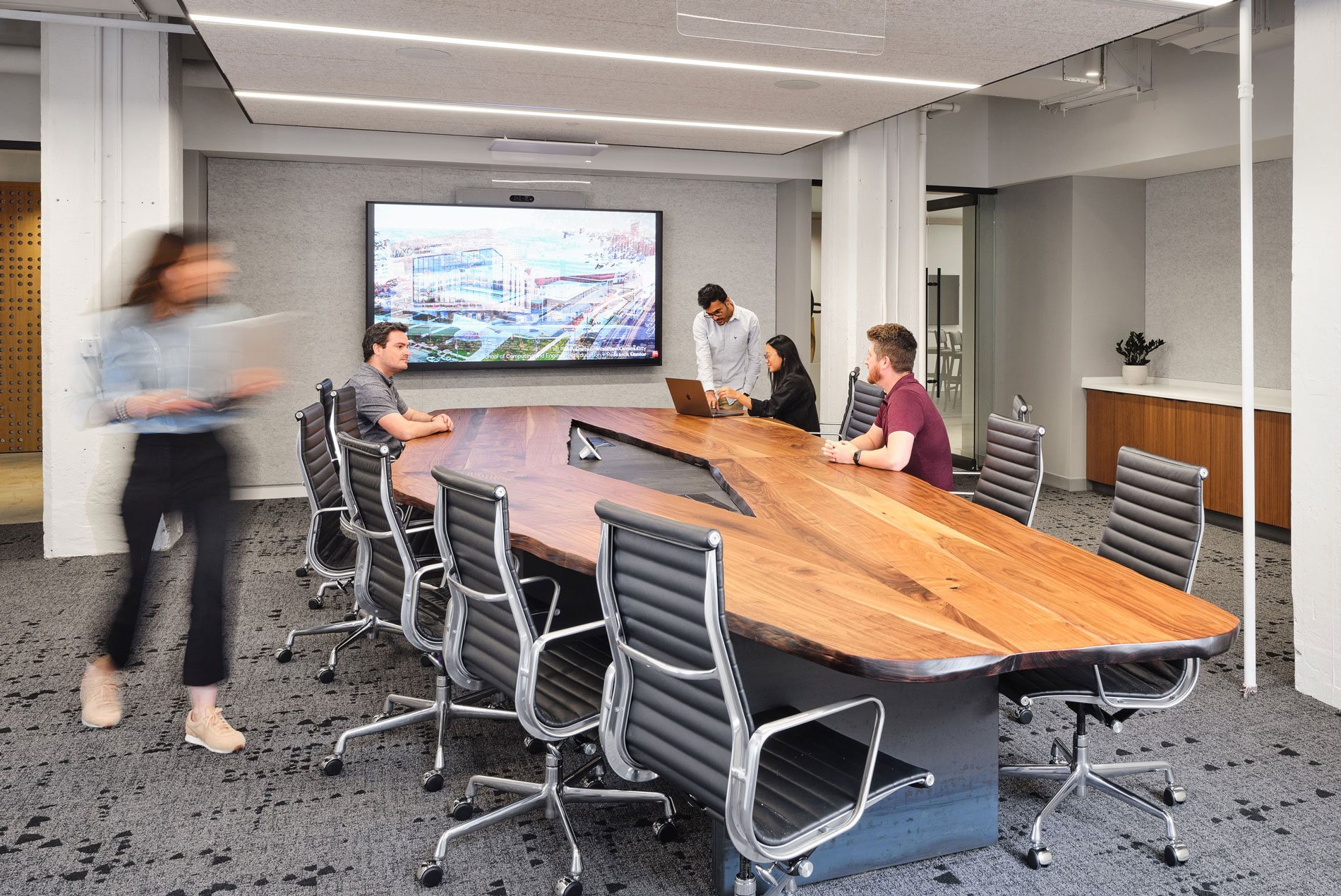
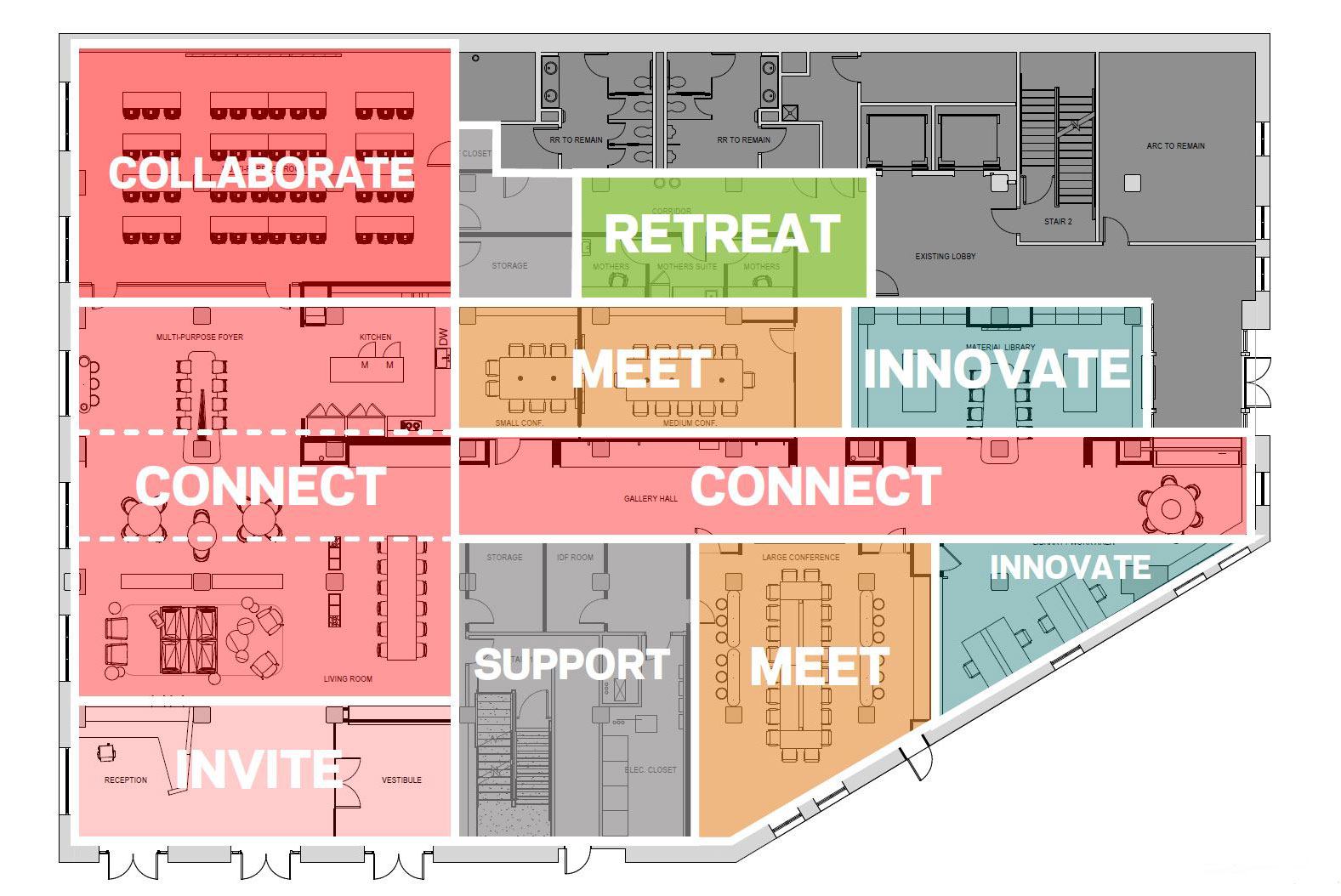
We’ve also established different workplace zones designed with the right energy, acoustics and lighting for the task. The spatial sequencing of these zones addresses people’s different sensory needs, offering space for people who prefer reduced distractions and simplified spaces, and areas for those who desire a higher stimulation level.
- Social and collaborative zones are designed for a higher level of engagement and cloistered together to foster idea-sharing and innovation.
- Communal work zones with a bit of buzz are intended for team interaction as well as independent work. Nearby huddle and telephone rooms allow people to duck into a private space for a quick call or impromptu meeting.
- Quiet zones for concentrative, contemplative work are far from public spaces.
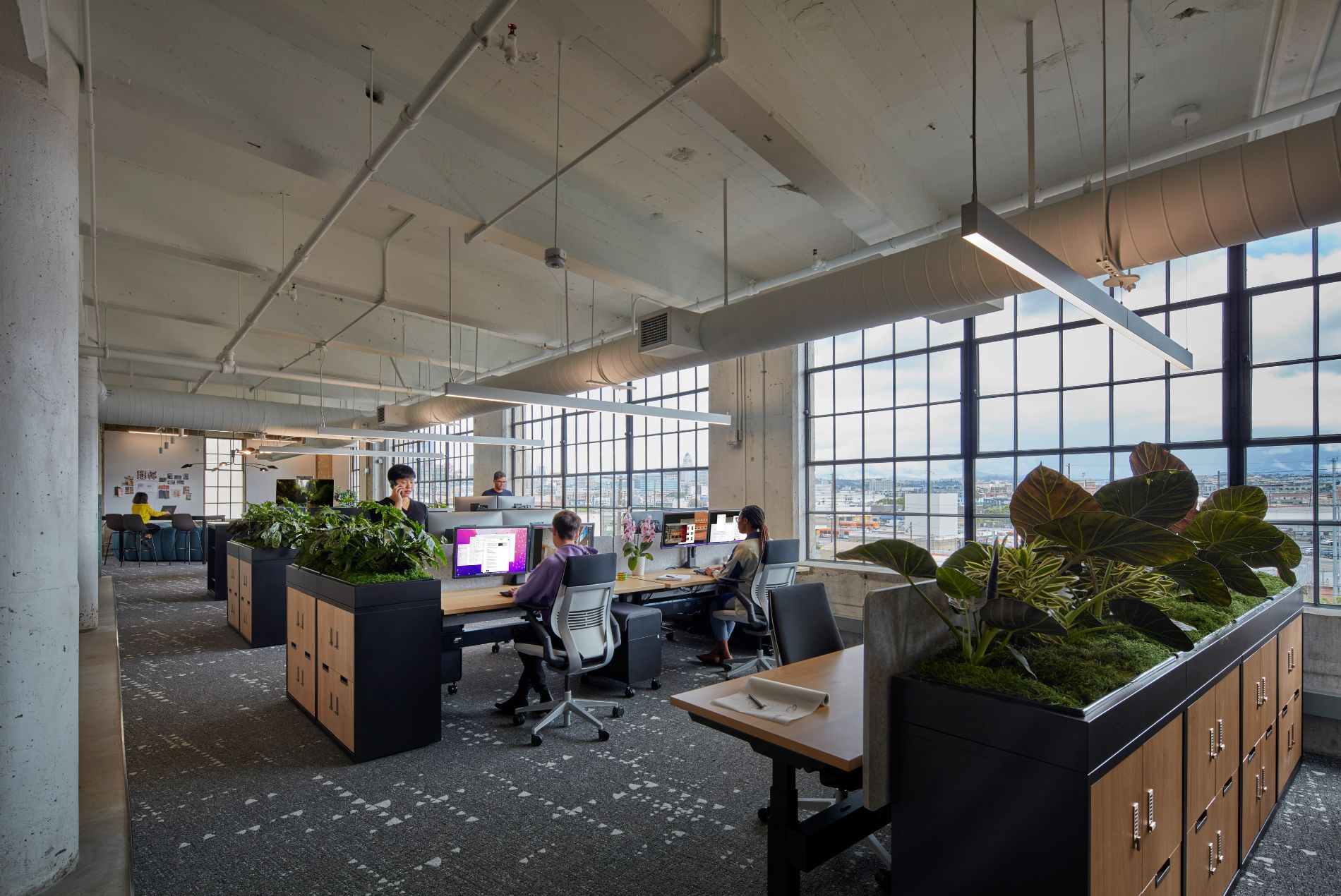
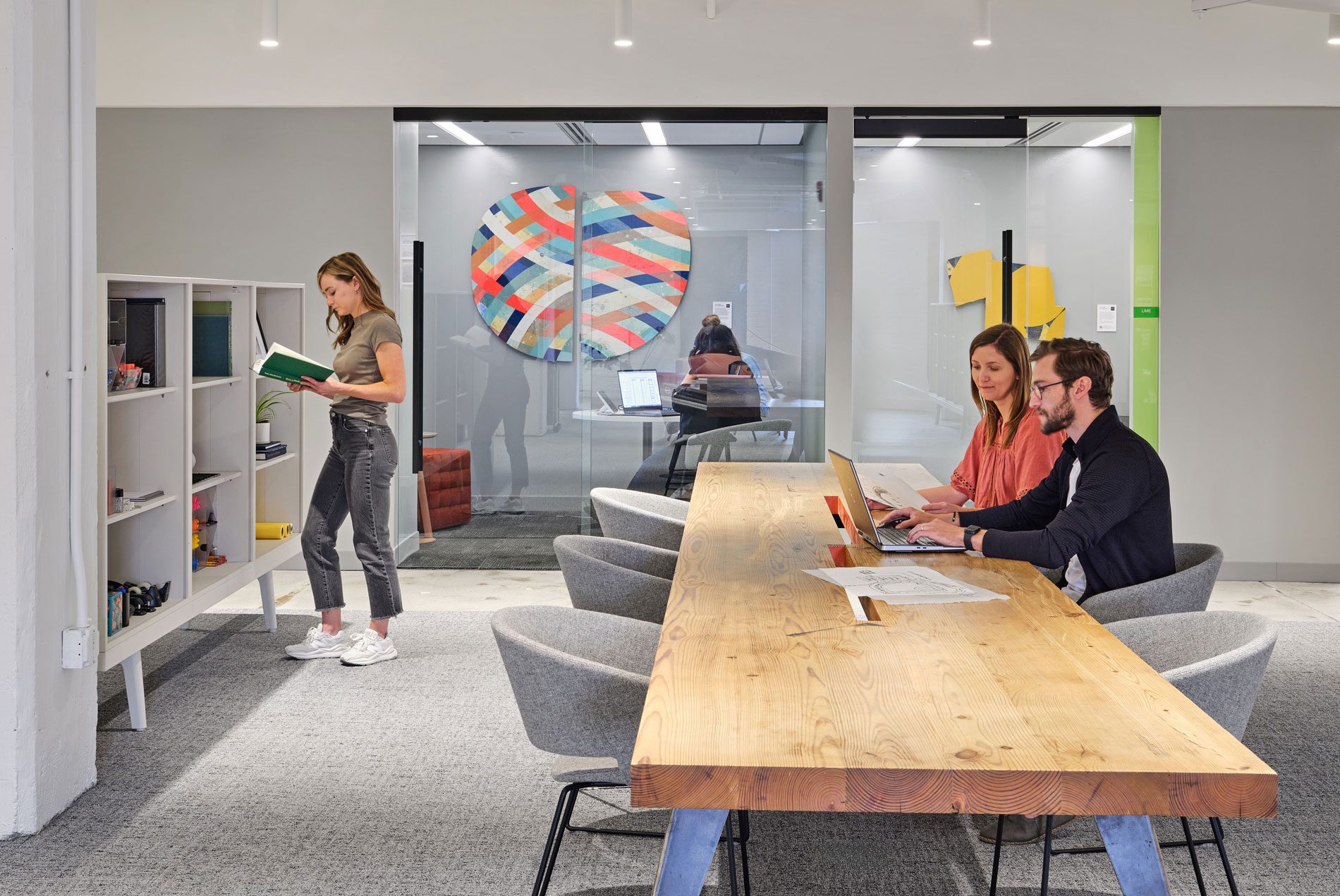
Our offices also offer assigned and unassigned (free choice) seating. Just as people working remotely can choose to work from a variety of spaces—from the kitchen table to the living room sofa—free-choice seating encourages our people to choose spaces that fit their needs and work style. Those with unassigned seats can access a variety of workpoints and storage lockers.
3. Health & Well-Being
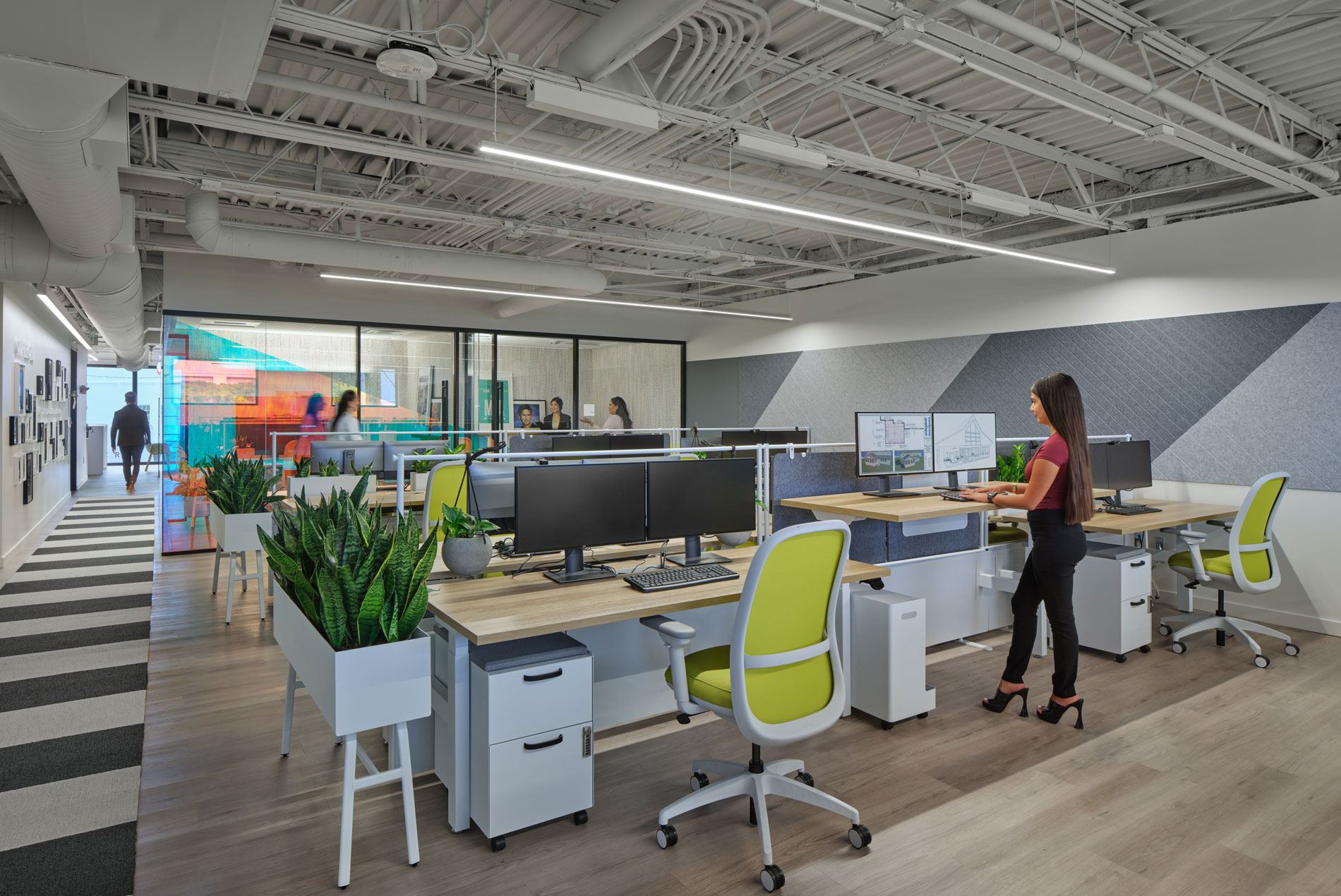
The pandemic placed increased emphasis on health and well-being. Our new studios reflect that priority. Better acoustics control noise. Ergonomic chairs and sit-stand desks support physical health. Lactation rooms offer new mothers a comforting and private environment. Wellness rooms provide a quiet sanctuary to de-stress and meditate.
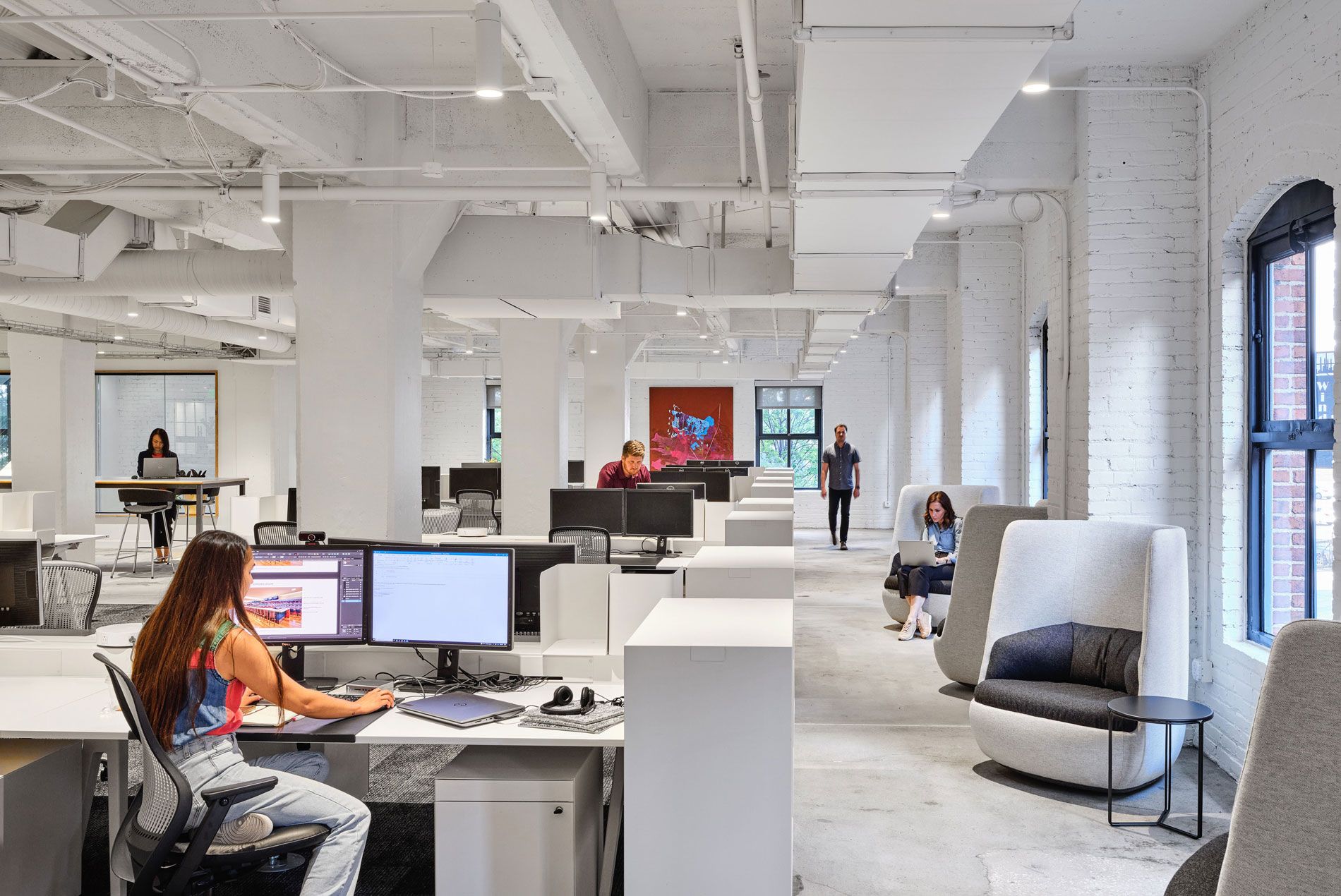
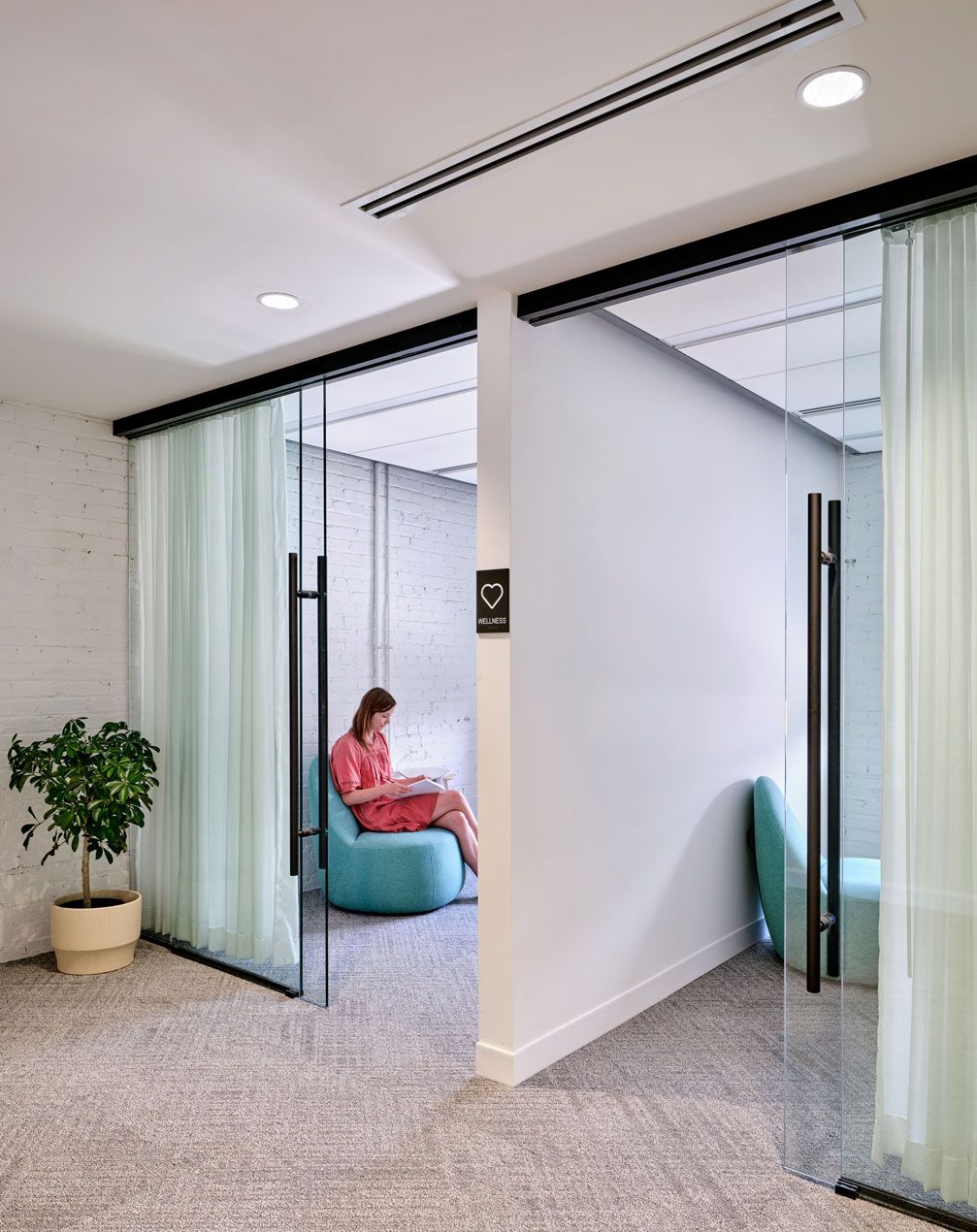
We’ve also renewed our focus on biophilic design. Live plantings, natural materials, such as wood, stone and leather, and organic patterns in carpets, artwork and other furnishings connect people to nature’s healing and restorative powers.
Most importantly, we’ve democratized daylight, bringing it deeper inside and placing people closer to windows where they can benefit from outdoor views and balance their circadian rhythm.
4. Connection to Place
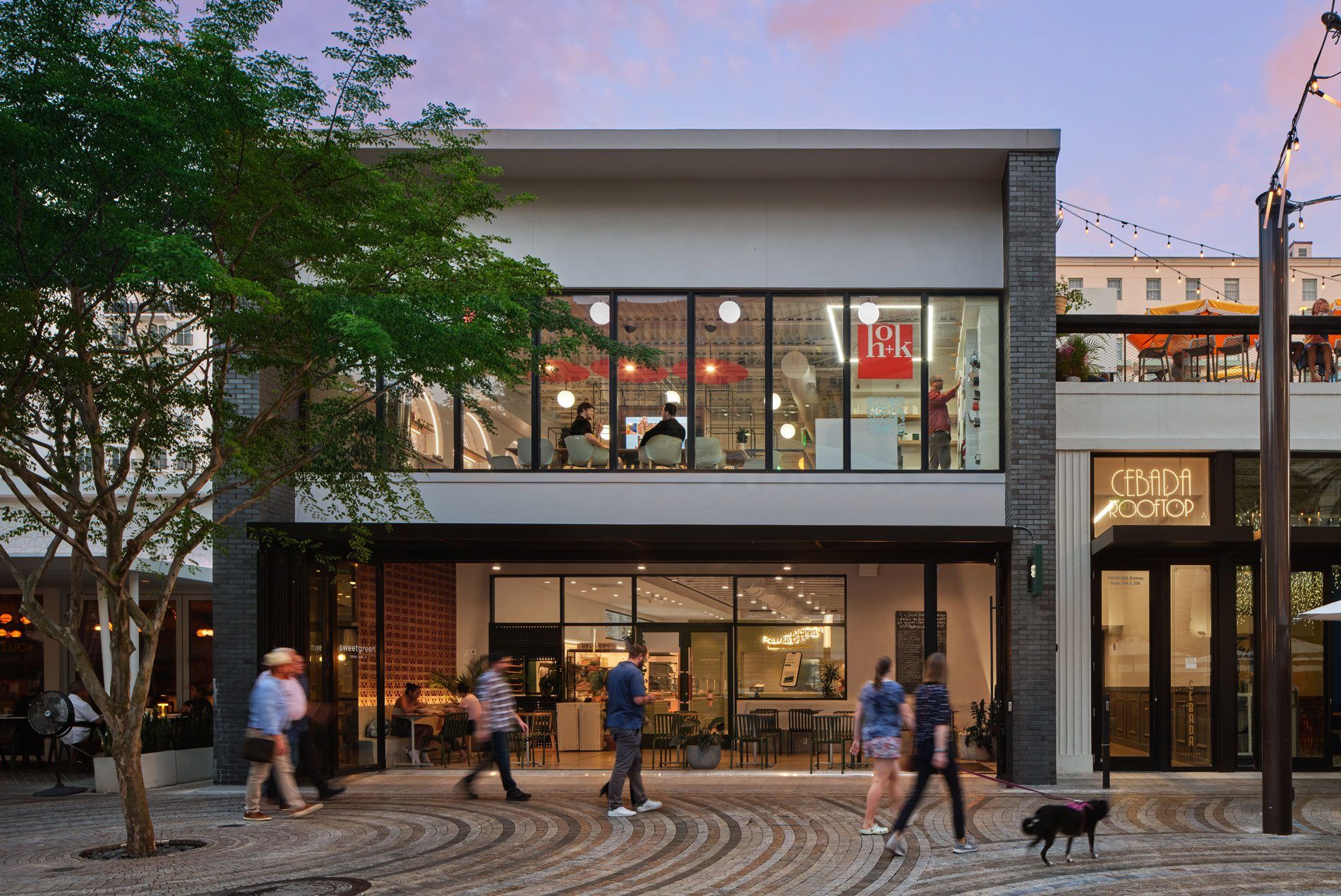
Location, location, location. There’s truth to that old real estate adage. When selecting the location of our new studios, we considered how the neighborhood could serve as an amenity.
In Miami, our office fronts a popular pedestrian boulevard lined with restaurants and cafes for gathering and entertaining clients. Our Austin office sits in the creative East Austin district surrounded by galleries, bars, boutiques and a breakfast taco joint. In Los Angeles, our new studio in a historic building near the Arts District features a rooftop event space, a free neighborhood gym and multiple restaurants within walking distance.
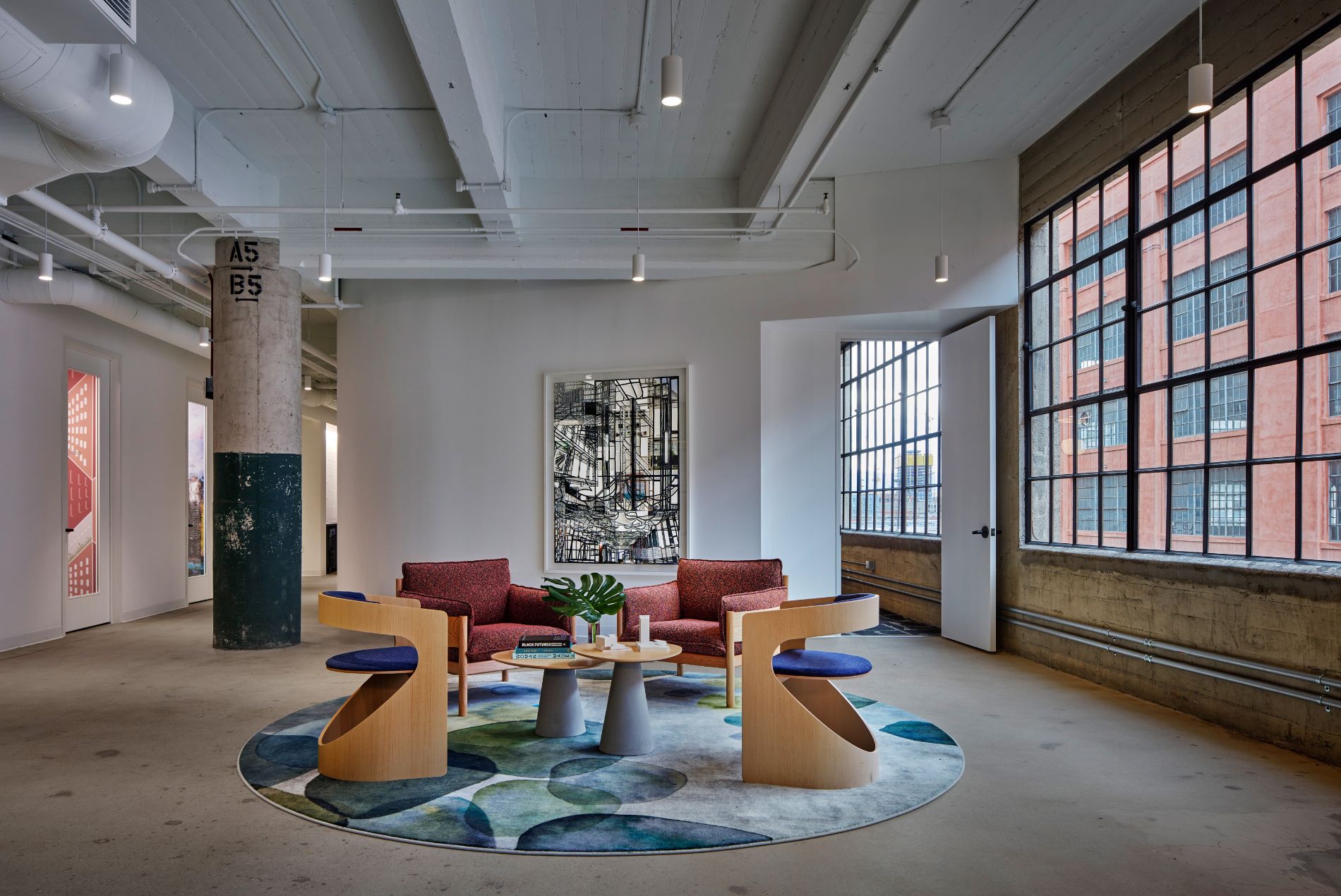
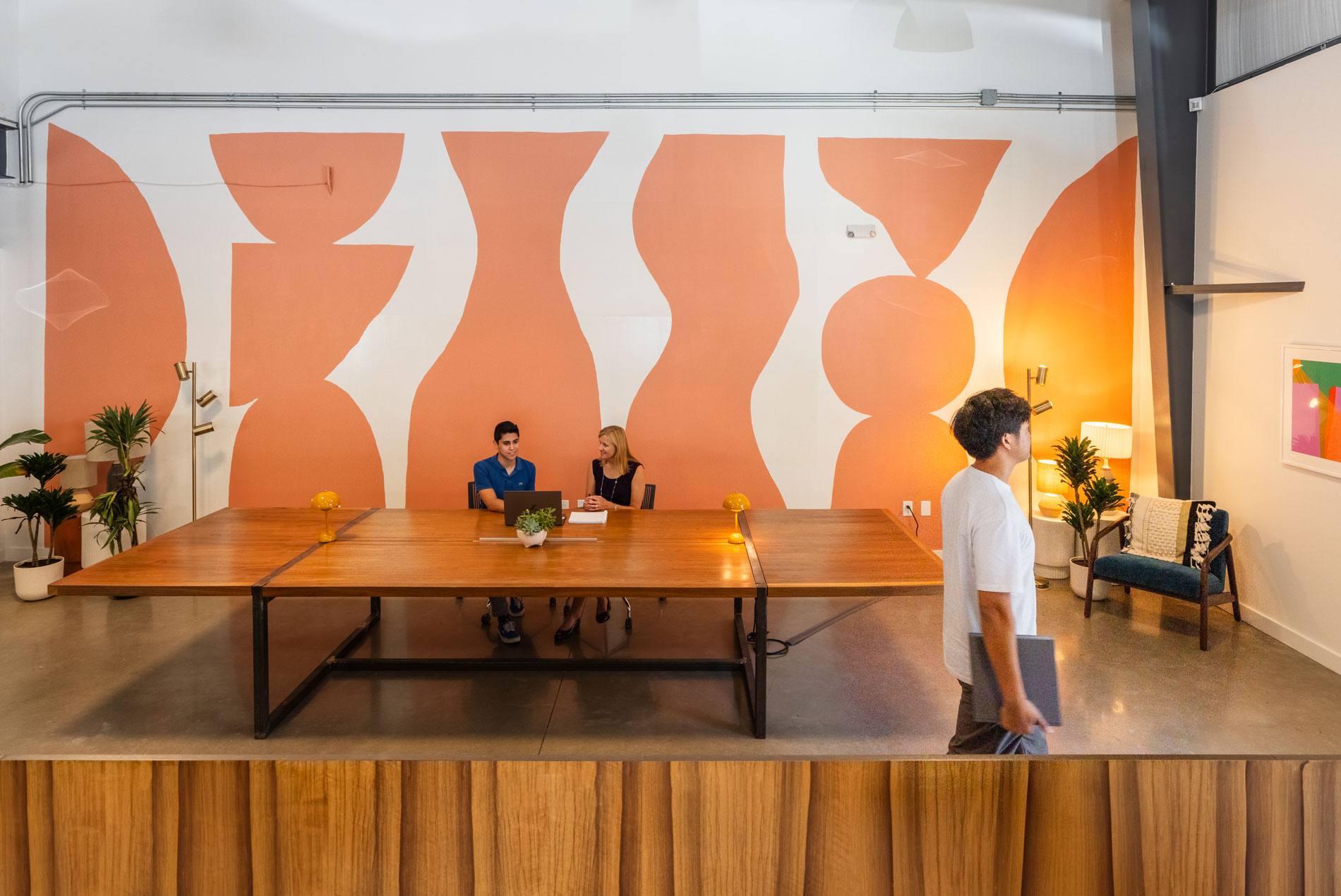
Inside the office, we’re using design to further connect our studios to their communities. Our renovated New York studio’s new layout gives more people panoramic views of Bryant Park. Our renovated Kansas City office, located in a former warehouse in the Crossroads Arts District, embraces the neighborhood’s industrial vibe with exposed brick and concrete, reclaimed wood and a repurposed loading dock for outdoor gathering.
Local artwork further connects our studios to their communities. Our Austin and Los Angeles studios feature murals and paintings by local artists, some of whom work just down the street. In each of these studios, we also teamed with arts groups who provide us with rotating collections of works from local artists, often from underrepresented communities.
5. Branding & Culture
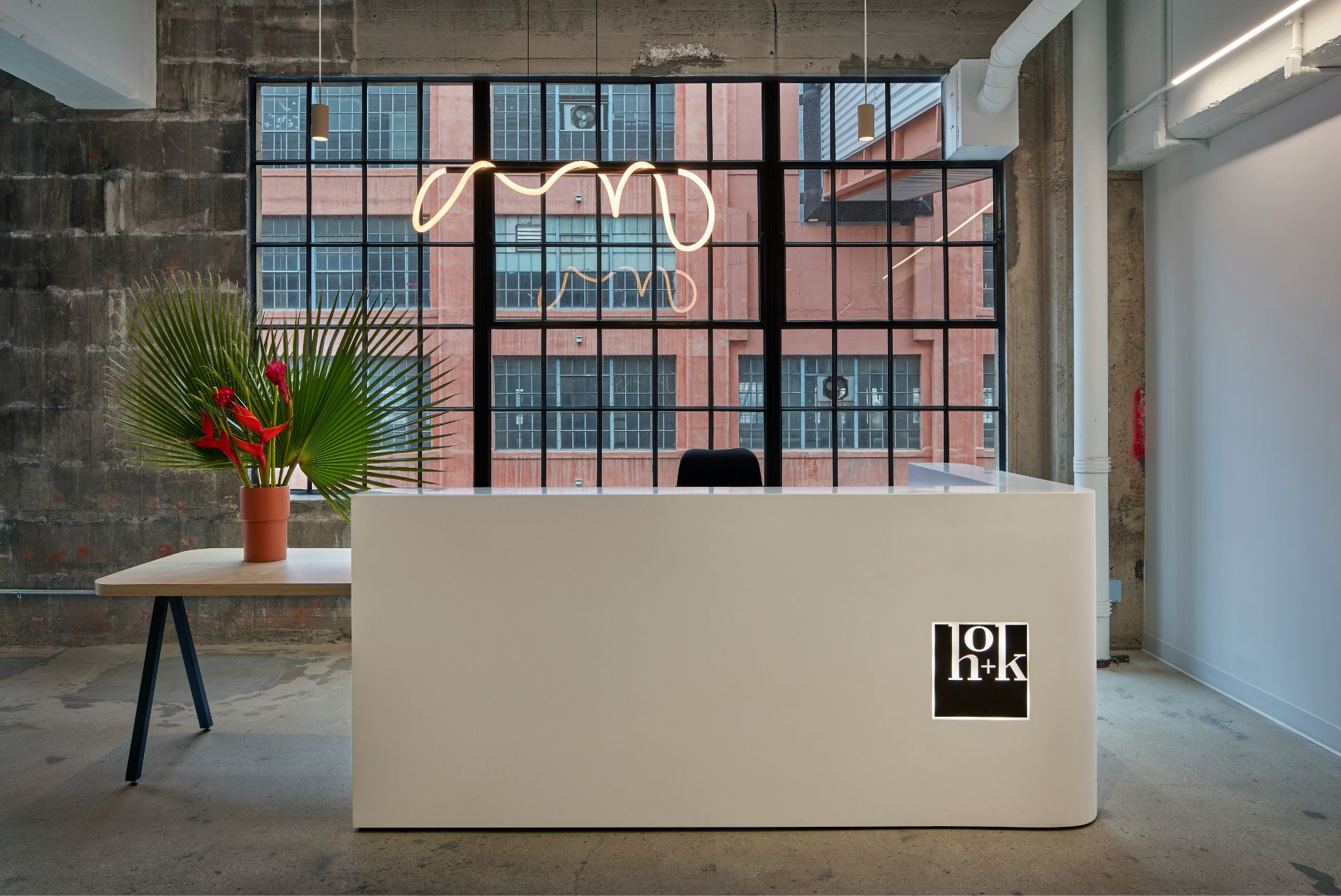
We wanted our new offices to amplify HOK’s culture and celebrate our work. To do this, we introduced additional pin-up walls for displaying ideas, expanded socialization areas and created ways to let people peek behind the HOK curtain to see what we do.
Kansas City’s hotel-like reception area, gallery walk (with a peg-board display wall) and adjacent meeting rooms offer flexibility that supports both staff and community gatherings. Numerous pin-up and display areas encourage staff to share ideas that facilitate design conversations.
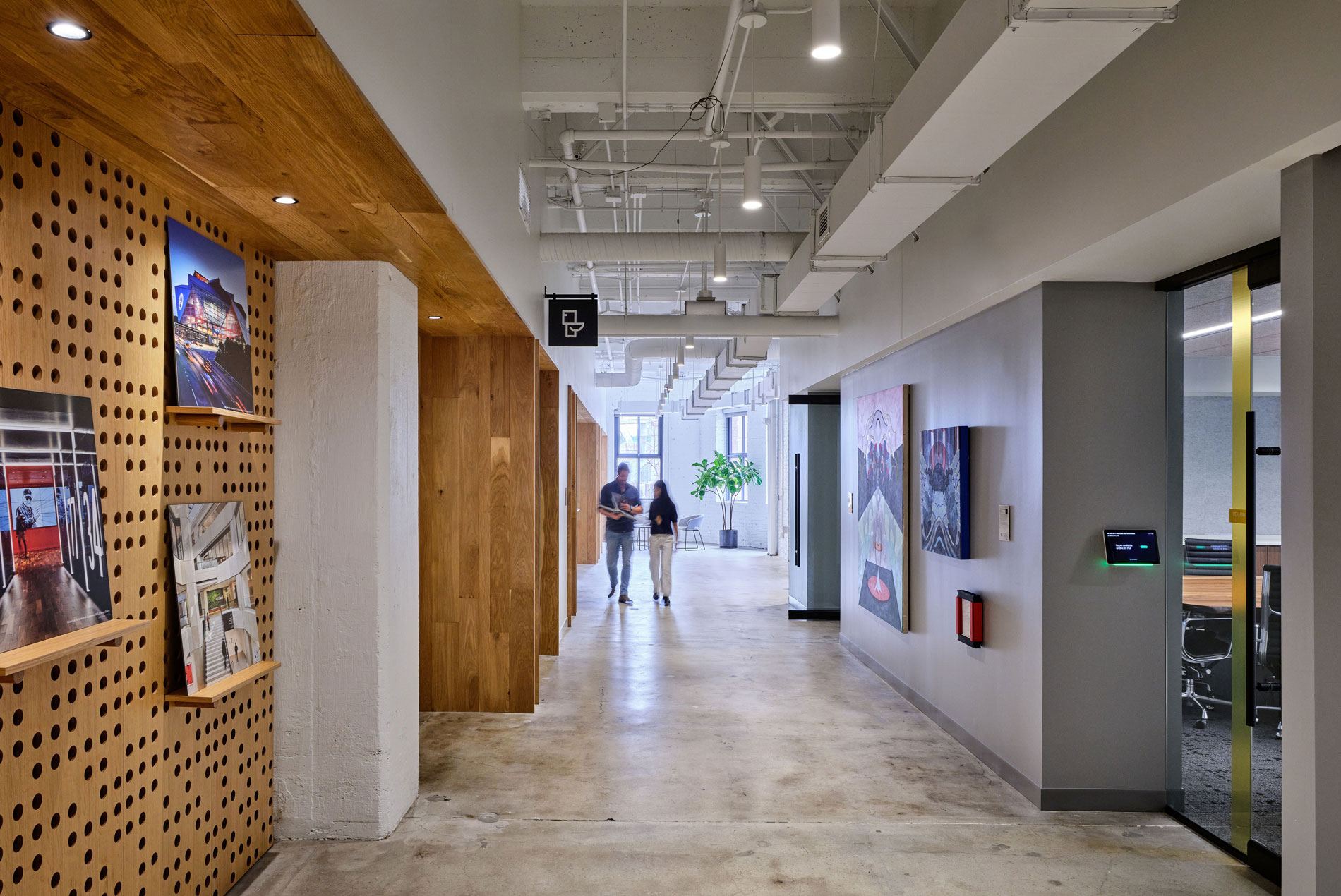
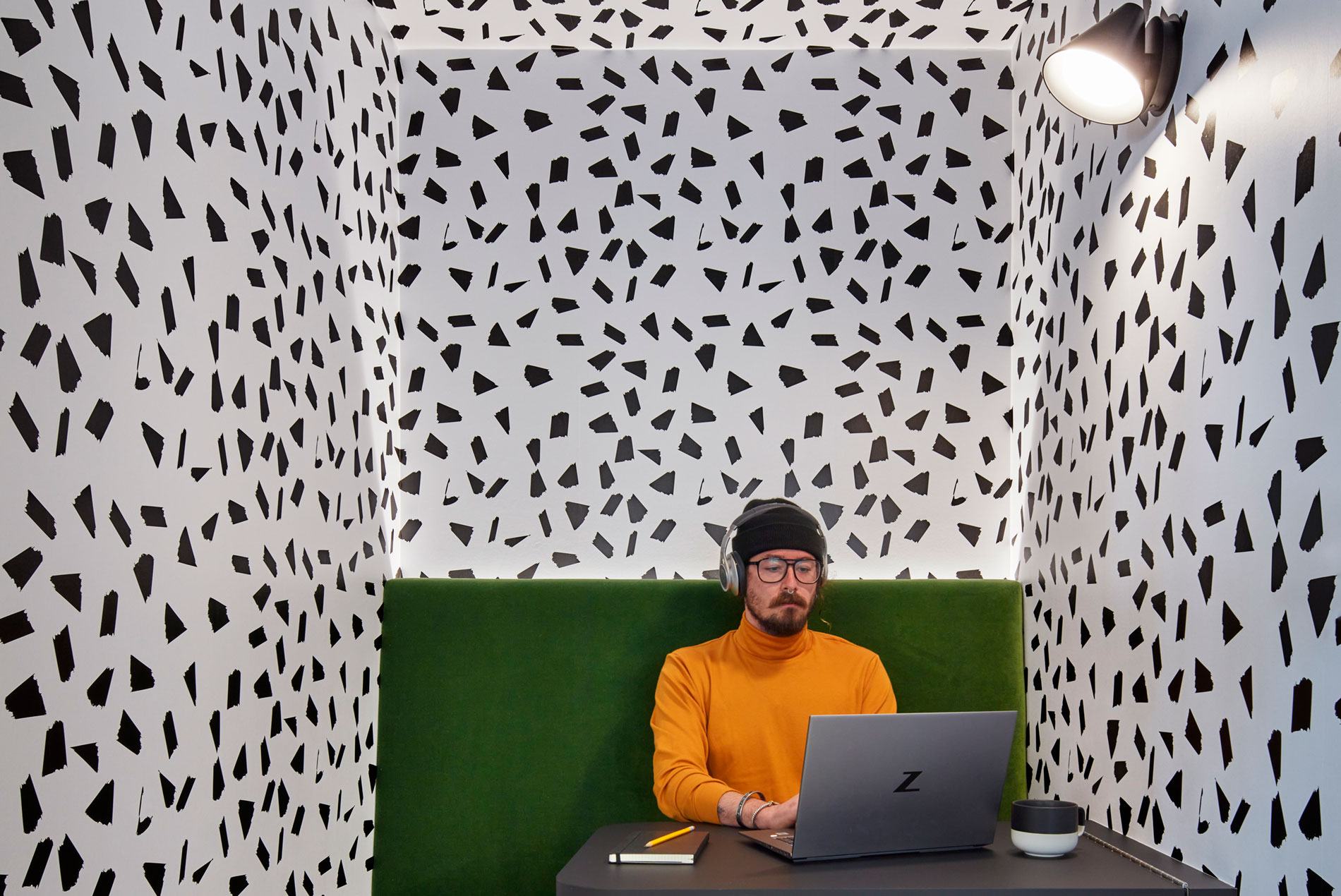
In Los Angeles, we hosted a staff competition to design the walls of our phone and focus rooms. The wild and vivid wall coverings showcase our people’s creativity and imagination.
In Miami, we placed our materials library and dining area in front of a large street-facing window to allow passersby to peer in and see our people interacting. A central corridor deeper in the studio features photos of Miami staff and projects.
6. Sustainability & Inclusion
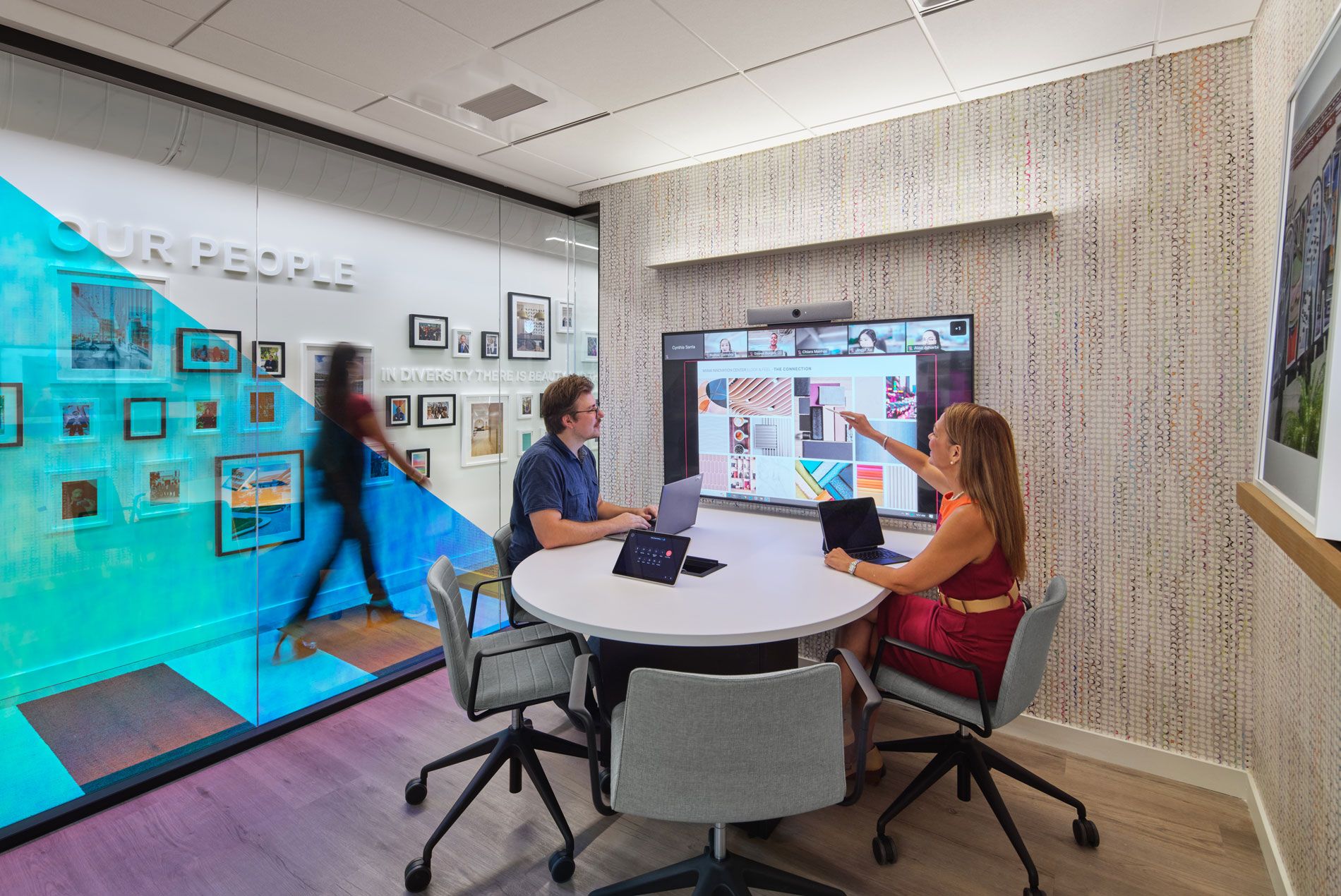
As champions of sustainable and inclusive design, it was important for our new studios to reflect our values when it comes to equity and the environment.
Our new Los Angeles studio earned LEED Platinum and Fitwel 1-Star certifications for sustainability and wellness. Energy-efficient HVAC systems, effective daylighting, reduced lighting power density and daylight/occupancy sensors have cut energy consumption by 56% compared to ASHRAE baseline data. Water conservation measures like efficient low-flow fixtures have reduced water use by 39%. More than 90% of construction waste was diverted from landfills during the buildout of the space.
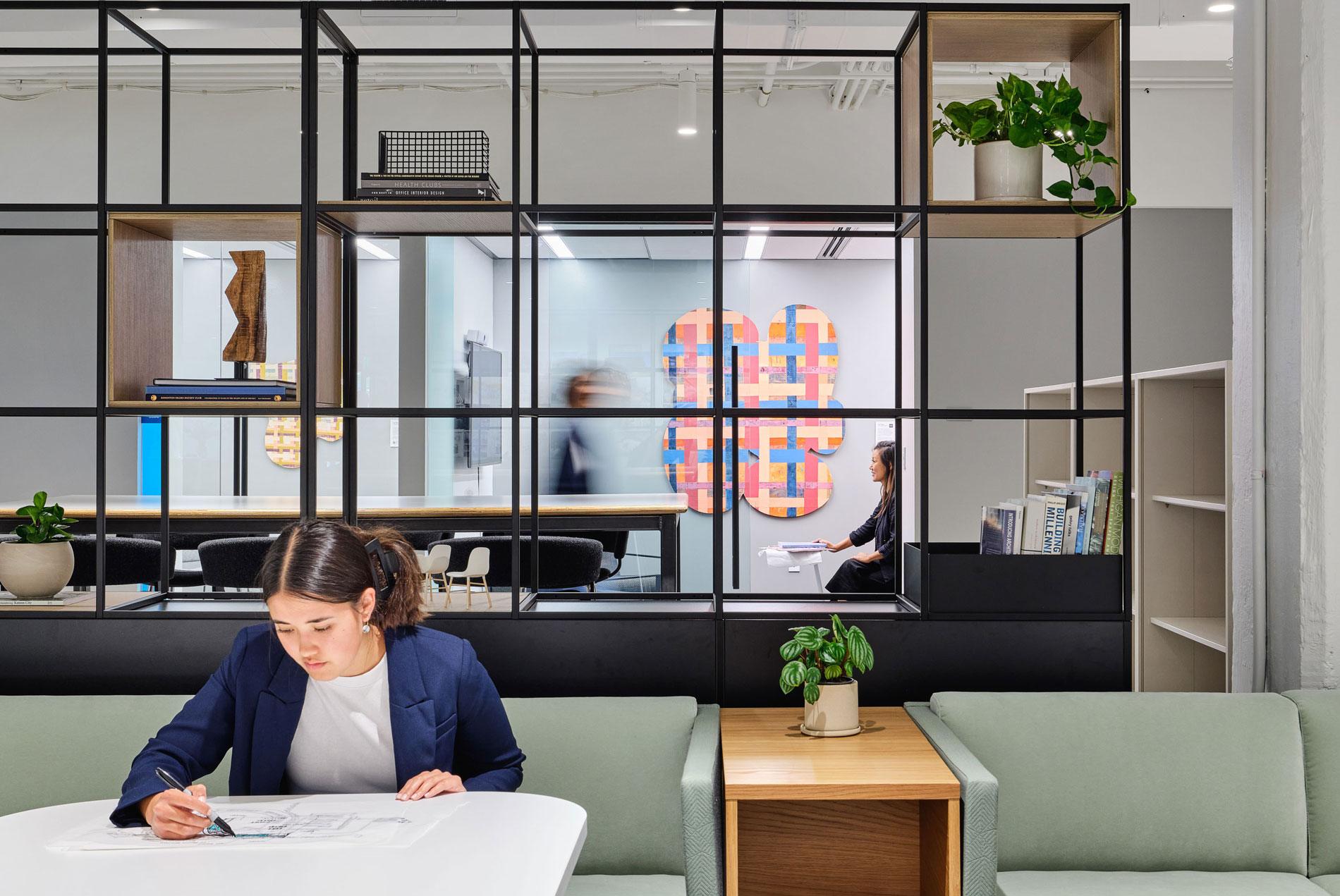
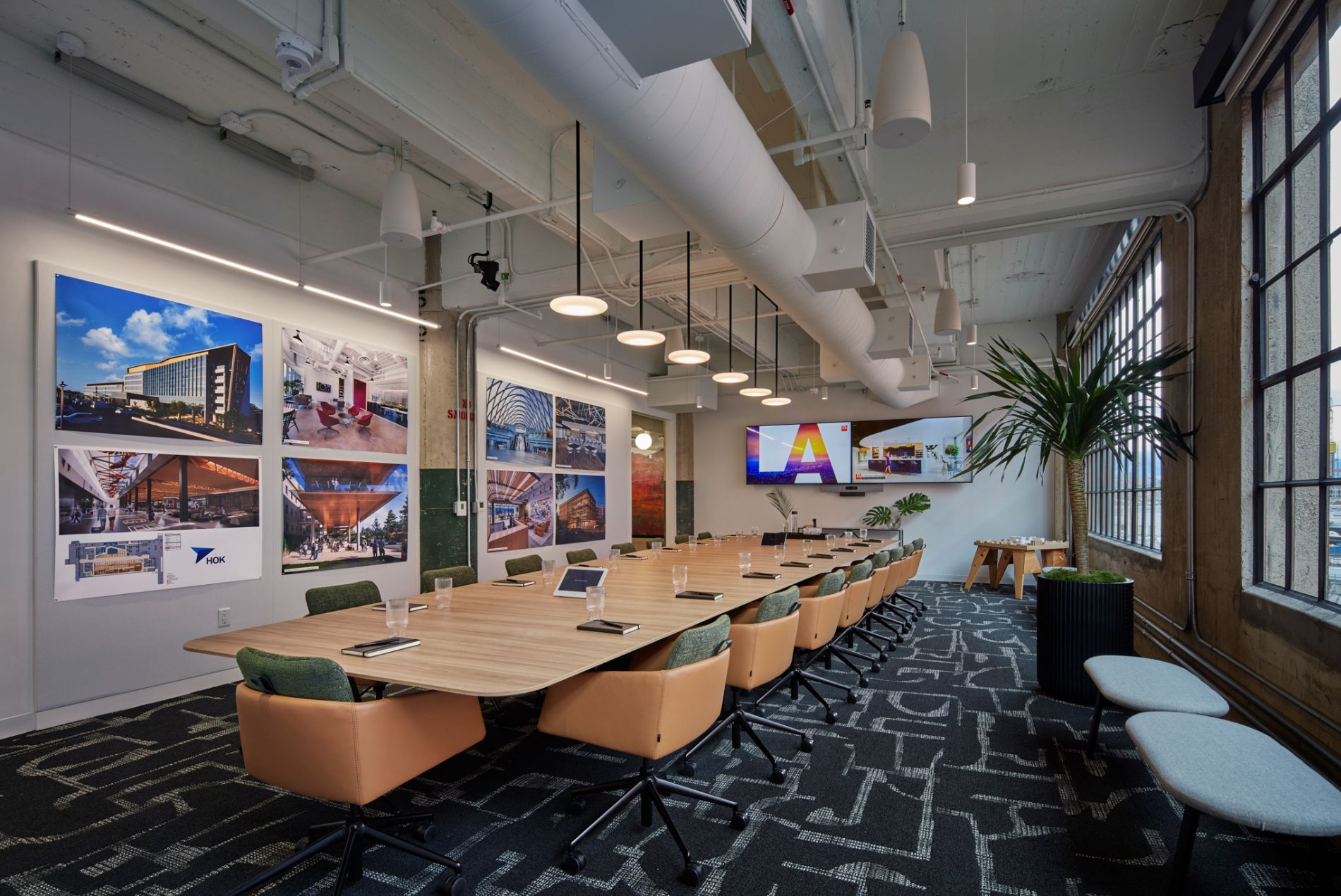
In New York, reusing existing furniture reduces costs and embodied carbon for the renovation. In Kansas City, repurposed wood from our previous office found new life throughout the new space.
Our new studios also were informed by our research and work into neurodiversity. Hypo- and hyper-sensitive zones allow people to find the space that meets their sensory need.
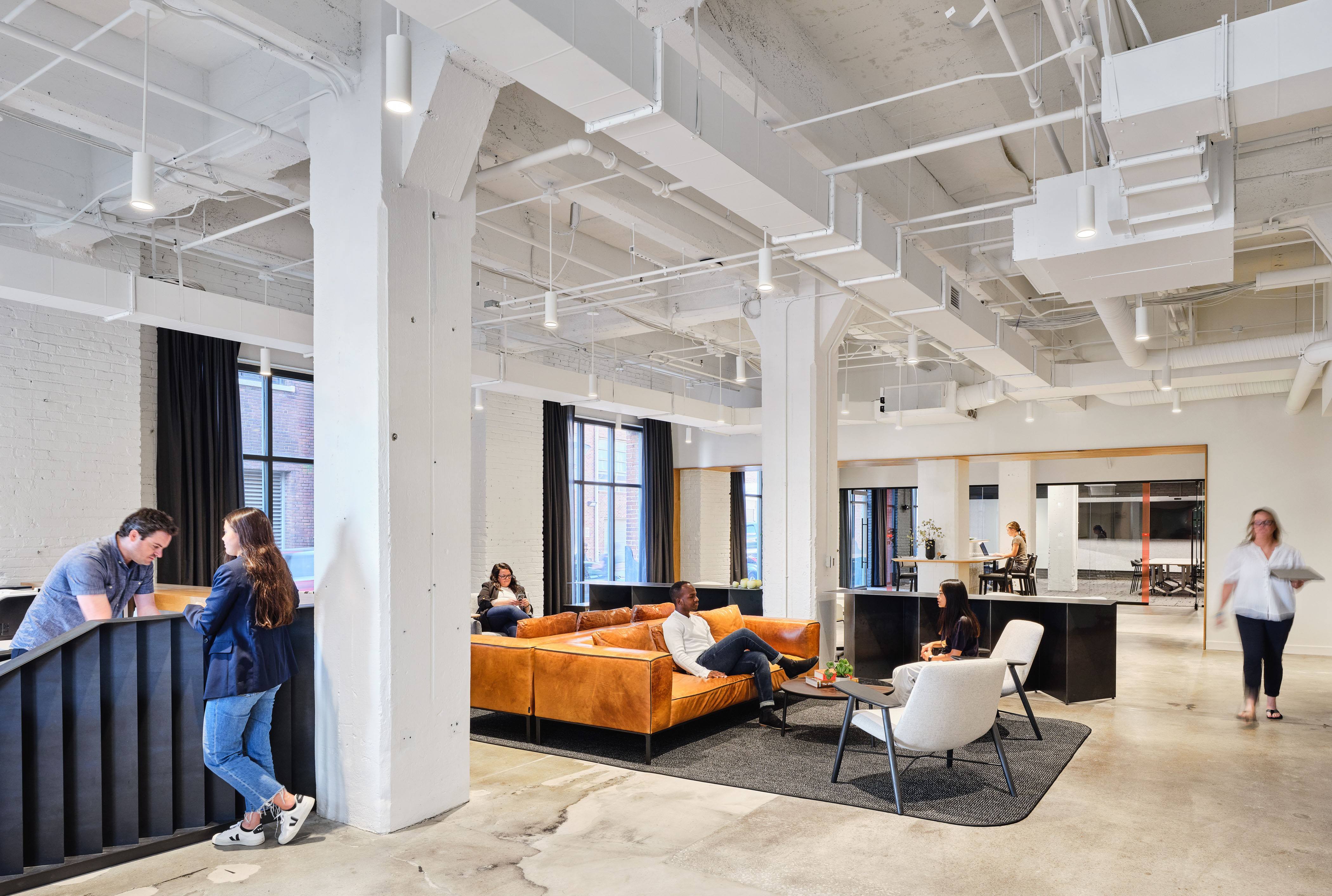
Takeaways
The pandemic changed the way we work. It also altered the role of the office. What the pandemic didn’t change, however, is our human need to gather, share and be part of something bigger than ourselves.
As we’ve discovered with the design and rollout of our new studios, there is still a need—and demand—for shared spaces that facilitate interaction. We see this on Mondays and Fridays when our employees can work remotely, yet many choose to spend these days on-site. This is often the case in our new and renovated studios, which provide similar comforts of home with the added benefits of nicer amenities, greater flexibility and the energy that comes with working alongside others.
Want to learn more about the workplace designs described here? Talk directly to the people who created them:
Austin: Principal-Design George Blume at george.blume@hok.com.
Kansas City: Sr. Principal-Design Peter Sloan at peter.sloan@hok.com and Project Architect Lillian Cooper at lillian.cooper@hok.com.
Los Angeles: Design Principal Adaeze Cadet at adaeze.cadet@hok.com and Director of Design, Interiors Mike Goetz mike.goetz@hok.com.
Miami: Director of Design, Interiors Steven Burgos at steven.burgos@hok.com.
New York: Senior Project Interior Designer Christine Vandover at christine.vandover@hok.com and Director of Operations, Interiors Catherine Yatrakis at catherine.yatrakis@hok.com.